Many Communities Have Unsafe Drinking Water
An estimated 800,000 state residents consume contaminated well water.
Problems are statewide
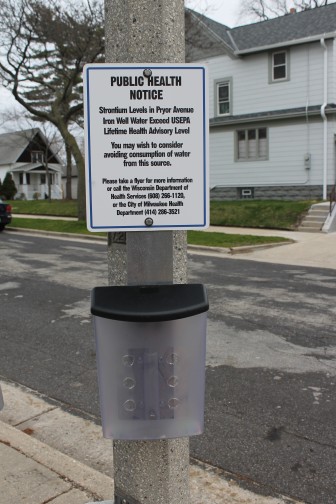
Milwaukee officials posted this warning about high strontium levels this spring on the popular public well where residents fill up drinking water jugs in the city’s Bay View neighborhood. The U.S Environmental Protection Agency is considering regulation of this naturally occurring metal, which is found in some of the highest concentrations nationwide in southeast Wisconsin. Consumption of strontium can lead to bone and dental problems in children. Photo by Katherine Keller of the Bay View Compass.
Over the past year, the Center examined the state of Wisconsin’s drinking water. Major findings include:
- Lead, dangerous especially to children’s brain development, is a threat in a projected 6,000 homes with lead pipes on municipal water systems, according to EPA estimates. And as many as 16,920 of the state’s 940,000 rural households on private wells also could be exposed to unhealthy lead levels, most likely from plumbing, according to a study by the Wisconsin Department of Health Services. Officials from the EPA and DNR have publicly acknowledged current federal regulations fail to protect against dangerous levels of lead in water.
- Nitrate exceeds safe levels in the private wells of an estimated 94,000 Wisconsin households, according to state estimates. Despite these dangers, the law carves out a regulatory loophole so that private well owners with nitrate levels that could kill infants cannot qualify for financial assistance to get their wells replaced — unless the wells are used to water livestock.
- Pesticides, some of which are linked with health issues ranging from cancer to reproductive problems, are present in one-third of the state’s private wells tested, according to the state’s 2014 Groundwater Coordinating Council report to the state Legislature. Tests for the herbicide atrazine, for example, showed 440 of 5,500 wells tested had levels above the EPA’s health enforcement standard.
- A 2013 Department of Health Services study of 3,868 private wells statewide showed 2.4 percent of them exceeded the safe drinking water standards for arsenic of 10 parts per billion. Applied to all of the state’s private wells — a method endorsed by the study’s lead author — that percentage means residents in some 22,560 homes may be consuming unsafe levels of arsenic, which has been linked to cancer, diabetes, lower IQ and other illnesses.
- That same study, published in the Journal of Environmental Health, found an indicator of possible disease-causing organisms such as E. coli or viruses in 18 percent of the 3,868 private wells tested statewide between 2007 and 2010.
- Wisconsin’s private wells have some of the highest levels in the United States of the heavy metal strontium, which is suspected of causing rickets and bone deformities in infants and children, according to the EPA. The naturally occurring contaminant, which is currently unregulated, was found by a University of Wisconsin-Green Bay researcher at unsafe levels in 73 out of 114, or 64 percent, of well water samples in Brown, Calumet and Outagamie counties, where the local geology has been linked to the presence of strontium.
- Tests of municipal wells in 42 communities for radium, a naturally occurring contaminant linked to health problems including cancer, exceeded federal safety limits in 2006. As of June, two dozen communities continued to exceed the EPA’s maximum contaminant level for radium, which is found at higher levels the deeper communities drill down for water. Waukesha continues to find spikes in its water and has made a controversial, internationally watched bid to become the first community outside the Great Lakes watershed to draw its water from Lake Michigan.
- Unsafe levels of molybdenum, a naturally occurring metal that can cause joint, gastrointestinal, liver and kidney problems, were found in 200 of 1,000 private wells tested in southeastern Wisconsin by the environmental group Clean Wisconsin in 2014. The organization found that the severity of contamination increased the closer wells were to sites with recycled coal ash from power plants. The DNR said the data are insufficient to link the contaminants to coal ash.
According to the petition filed with the EPA last month, “water quality issues permeate throughout Wisconsin and are not confined to a particular area of the state. Petitioners have arrived at a conclusion that the status of the state’s water quality warrants wide-sweeping change.”
Exposure to contaminants large
The number of people exposed to contaminated tap water is hard to come by because most studies involve a single pollutant or region where drinking water is threatened. But when those pollutants and affected regions are looked at in total, the sum of people affected escalates.
For example, statewide sampling of 3,868 private wells by state public health researchers found 47 percent of the tested wells had one or more contaminants at levels exceeding health-based water quality standards.
Lynda Knobeloch, the lead author of the paper and who is now retired from her position as a researcher with the Wisconsin Department of Health Services, said she was surprised at the percentage of contaminated wells detected in the study. Researchers tested for coliform bacteria, fluoride, nitrate and a panel of 13 metals. The researchers did not test for other contaminants, including pesticides, believed to be in thousands of wells.
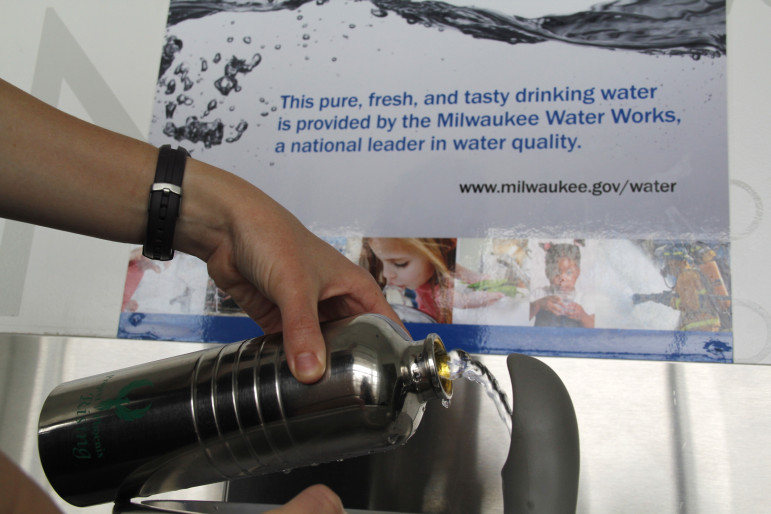
The city of Milwaukee is considered a national leader in testing for contaminants in its drinking water. But thousands of Milwaukee children are diagnosed each year with lead poisoning, which some researchers say could be at least partially due to drinking water tainted with lead. The compound, which can cause brain damage, can leach from aging lead pipes. City officials say they find very little lead in Milwaukee’s water, but critics say the federal sampling protocols routinely miss dangerous levels of the metal. Photo by Kate Golden of the Wisconsin Center for Investigative Journalism.
“Since an estimated 940,000 Wisconsin households, including more than 300,000 children, drink water from a private well, the finding that nearly half of the wells are unsafe is a major public health concern,” the researchers wrote in their study, published in 2013.
Municipal water systems fare much better than private wells, partly because they are heavily regulated under the federal Safe Drinking Water Act and must test for a broad range of contaminants.
In 2014, according to the DNR’s annual report on public drinking water systems, 95.5 percent, or 10,904 systems out of 11,420, met all health-based standards for regulated contaminants.
Ken Bradbury, director of the Wisconsin Geological and Natural History Survey, said the aquifers from which most municipalities and all private well owners draw their drinking water are by and large a clean and plentiful source of water. But he added a caveat.
“We have this wonderful resource we take for granted,” Bradbury said. “And we don’t respect it enough.”
Natural threats made worse by man
Among the culprits in Wisconsin’s drinking water are natural contaminants such as arsenic and radium. And although they are naturally occurring, their presence in drinking water is often made worse by the drawdown of aquifers that comes with sprawling population growth and insufficient oversight of water use.
About 10 years ago, Bradley Burmeister’s family in Outagamie County had its private well tested for arsenic as part of a high school class project.
The results were shocking: Arsenic levels were 165 times higher than the federal health standard. Ever since, the Burmeisters have been buying bottled water by the case from the grocery store.
Tests by the DNR in the 1990s of nearly 2,000 private wells in northeastern Wisconsin showed nearly 20 percent of them exceeded the health standards for arsenic.
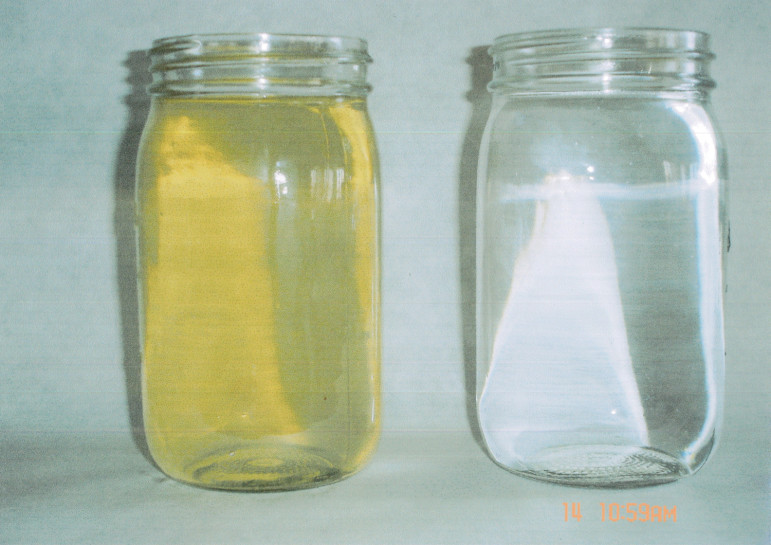
Yellow-brown well water used to come from the tap in the home of Chuck Wagner, who lives in rural Luxemburg in Kewaunee County. He said testing linked the contamination to cattle manure. It cost him $10,000 to drill a new well free of contaminants. Photo by Chuck Wagner.
Some wells that once tested negative for arsenic may now be tainted because of drawdown, according to John Luczaj, a groundwater expert at UW-Green Bay.
Patrick Laughrin, who lives in the Calumet County community of Hilbert, said arsenic began showing up in his well after a large dairy operation nearby drilled high-capacity wells.
Another natural contaminant, radium, has begun to show up in the water systems of communities such as Sussex in Waukesha County, which is part of eastern Wisconsin’s “radium belt.” The radioactive substance is more prevalent the deeper communities drill into a depleted aquifer.
Rules improve water quality
Not all the news is bad.
The federal Clean Water Act was passed 40 years ago, and Wisconsin’s waters — especially its lakes and rivers — saw tremendous improvements in quality as point sources of pollution coming from industries were cleaned up.
According to the DNR, since the passage of the federal law, Fox River paper mills cut pollution from 425,000 to 22,000 pounds of solids a day. Milwaukee went from an estimated 60 combined sewer overflows a year to 2.5. Phosphorus pollution from point sources such as factories and municipalities has been cut by 67 percent since 1994, according to the agency.
Jill Jonas, head of the DNR’s Drinking and Groundwater program, called Wisconsin’s efforts to ensure clean drinking water for the state a “tremendous success story.”
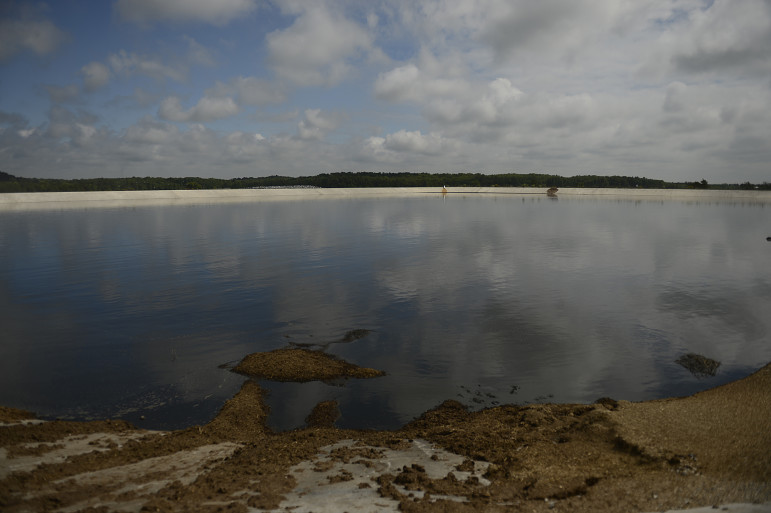
A large lagoon holds manure on the Kinnard Farms in Kewaunee County. Last year, an administrative law judge accused the DNR of “massive regulatory failure” for failing to prevent widespread contamination in the private water wells used by Kewaunee County residents living near large dairy farms. Photo by Evan Siegle of Green Bay Press-Gazette Media.
One hundred years ago, she noted, Wisconsin’s State Board of Health recorded 105 cases of waterborne typhoid fever for every 100,000 people. Today, such illnesses are rare, with about 400 cases nationwide each year — and more than two-thirds of them are acquired during international travel.
Things also are looking up for neighbors of the defunct Badger Army Ammunition Plant after years of agitating by citizens for clean water. Residents there have been drinking bottled water because of private wells contaminated with cancer-causing chemicals and other contaminants, byproducts of manufacturing explosives for World War II, the Korean War and the Vietnam War.
Town of Merrimac resident Gene Franks described living with “gnawing doubt” about the safety of his drinking water. But soon Franks’ home will be among the nearly 400 households in this scenic area south of Baraboo to get a municipal supply of water — courtesy of the U.S. Army.
Some regulation lax, full of loopholes
Despite the sometimes dramatic improvements in overall water quality, activists contend the state has gone backwards in recent years when it comes to enforcement of clean-water laws.
In 2011, the EPA identified 75 failings in the DNR’s enforcement of the state’s wastewater pollution permit program. Last month, after the residents’ petition was filed, the state agency announced it is working on two rule packages that will address 21 of the issues. The agency said it has resolved 36 of the issues and is working on more rule changes that will solve the 18 remaining problems.
“Our state has historically been, and continues to be, a leader in many water-related areas,” DNR Secretary Cathy Stepp said in a news release.
But the residents’ petition said the agency’s actions to resolve deficiencies represent a “lack of meaningful response.” The petition also charged that the agency’s authority and staff have been whittled away, citing the loss of 600 positions in the past 20 years.
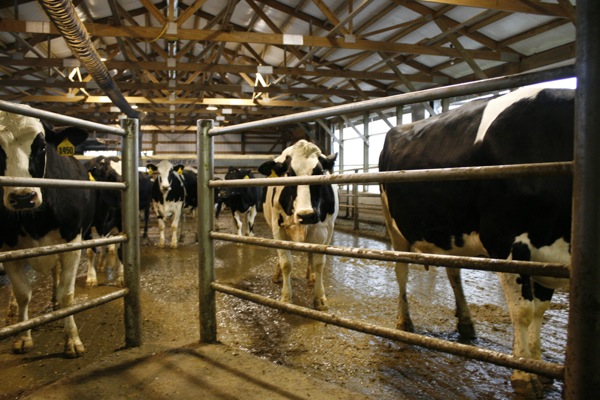
Manure from dairy cattle is one of the culprits in both nitrate and bacteriological contamination of drinking water in Wisconsin. Although municipal water is regularly checked for bacteria and nitrate, homeowners using private wells are responsible for testing the safety of their water. Photo courtesy of the Wisconsin Center for Investigative Journalism.
The petitioners claim Wisconsin now lacks the staff to adequately inspect and manage permits for wastewater sources, including large farms, municipalities and industries. EPA estimates show two-thirds of such facilities in Wisconsin are operating with expired waste discharge permits — the third worst rate in the nation.
Recent reorganization at the agency by Gov. Scott Walker “raises even more doubt” about its ability to carry out its duties under the Clean Water Act, according to the petition. One of those changes is eliminating a separate water division and consolidating both water and air pollution under a Business Support and External Services Division.
“The governor and state Legislature have starved the DNR’s power and robbed the agency’s experienced staff of professional autonomy to make informed decisions,” Wright said in a statement, adding, “Without effective government, we are compounding what our children and grandchildren will face in a world increasingly short of drinking water.”
Portions of the series were produced in collaboration with journalism classes participating in The Confluence, a project involving the Wisconsin Center for Investigative Journalism and the University of Wisconsin-Madison School of Journalism and Mass Communication. The nonprofit Wisconsin Center for Investigative Journalism (www.WisconsinWatch.org) collaborates with Wisconsin Public Radio, Wisconsin Public Television, other news media and the UW-Madison School of Journalism and Mass Communication. All works created, published, posted or disseminated by the Center do not necessarily reflect the views or opinions of UW-Madison or any of its affiliates.
Article Continues - Pages: 1 2
Tainted Water
-
Fecal Microbes In 60% of Sampled Wells
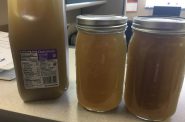 Jun 12th, 2017 by Coburn Dukehart
Jun 12th, 2017 by Coburn Dukehart
-
State’s Failures On Lead Pipes
 Jan 15th, 2017 by Cara Lombardo and Dee J. Hall
Jan 15th, 2017 by Cara Lombardo and Dee J. Hall
-
Lax Rules Expose Kids To Lead-Tainted Water
 Dec 19th, 2016 by Cara Lombardo and Dee J. Hall
Dec 19th, 2016 by Cara Lombardo and Dee J. Hall






















For the people who complain about Waukesha being required to cover water service for rural areas surrounding the city, this is why. Many rural well systems are at risk for contamination and thus the DNR is tasked with making sure everyone has a potential source to clean healthy water. It had nothing to do with water diversion and everything to do with this exact situation.
Maybe if we’d stop the widespread of those hell-on-Earth CAFO’s across the state, we’d see a huge decline all these chemicals- particularly arsenic, nitrate and an array of bacteria. These are poisoning our state and the health of individuals.